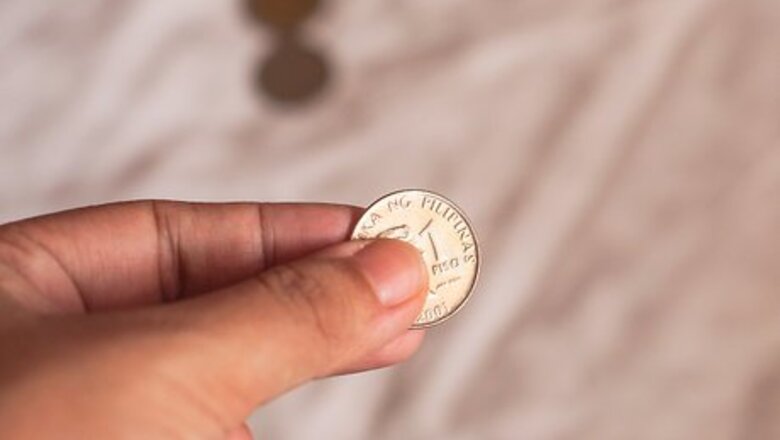
views
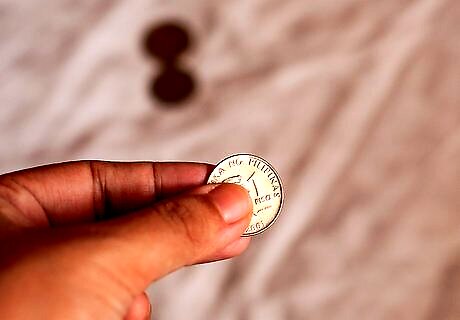
Look for a denomination. If the coin displays a face value, it is most likely a coin. If the coin has no face value, it may instead be a medallion.

Look for a date. Along with a face value, this is the easiest way to identify an old coin as such. Spanish coins minted since the early 17th century are among the oldest to have dates, but many old coins minted since then have been circulated enough to cause their dates to wear away. Some dates are listed using different calendar systems. For example, many Moroccan coins use the Islamic calendar and Nepali coins use the Vikram Samvat calendar.

Note the coin's shape. Most, but not all, coins are circular. Coins minted prior to the late 1700s, before the advent of steam-powered coin presses, tended to be irregular in shape. Other coins may be shaped as polygons that approximate circles, such as the 12-sided British threepence minted from 1937 to 1967.

Note the coin's size. Knowing a coin's diameter and its thickness can help to identify it, the diameter being the more reliable indicator. Measure the diameter with a ruler, preferably using the metric increments. Measure the thickness with a caliper. Handle it carefully to avoid damaging the coin.
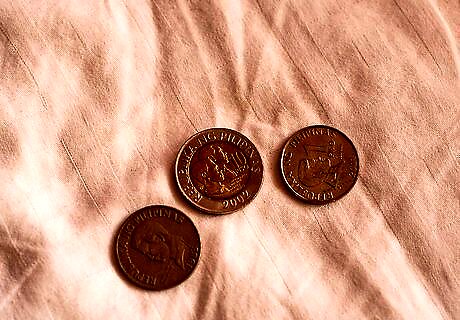
Look at the coin's color. A coin's color can be an indication of the metal it is made from. A golden color can indicate the coin is made of gold, a silvery color can indicate the coin is made of silver, and a brown color can indicate the coin is made of copper. Color is not an absolute determiner of the metal a coin is made of. A golden color may mean the coin is made of brass, while a silver color may mean the coin is made of a copper-nickel alloy. In the latter case, turning the coin on its edge can help to determine whether the coin is a clad coin using the copper-nickel alloy to sandwich a copper core layer. A clad coin of this kind will show a stripe on its edge. If still in doubt, you can also test the coin with a magnet. If it's attracted to the magnet, the coin is made of steel, has a steel core, or is steel-plated.
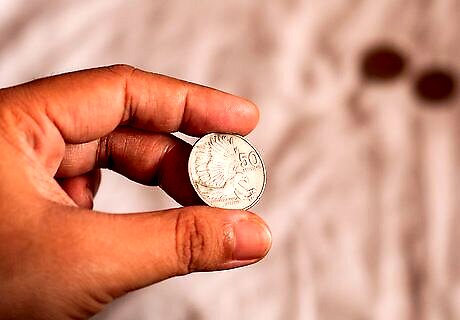
Note the image on the coin. Being able to recognize the person, animal, or other image depicted on a coin can help you identify its country of origin and give you a clue to its age. Although large cents minted in 1792 depicted George Washington's image, it was with the Lincoln penny in 1909 that American coins began to regularly depict presidents and other statesmen. Prior to that, most American coins depicted Liberty as a female figure, shown standing, sitting, walking, in bust form, or just her head. (The so-called "Mercury" dime issued prior to 1946 is properly called the Winged Liberty Head dime.) Most other coins depict an image of the ruler in power over the country or territory for which the coin was issued, either locally or nationally. Consulting a history book or website can help you identify who the ruler was. Note the image on the reverse (tails) side of the coin as well as the obverse (heads). This sometimes changes over a period of time separate from the obverse image. For example, the Lincoln penny bore a pair of wheat ears from 1909 to 1958, then an image of the Lincoln Memorial until 2009, when it was replaced with a shield.
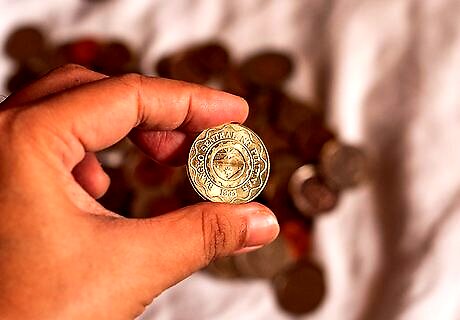
Look for an inscription. The inscription, or legend, on a coin can help you identify its country of origin and may also help determine its age if the date is missing. American coins usually state "United States of America" somewhere on the coin. They also usually bear the word "Liberty" and the mottoes "E Pluribus Unum" ("out of many, one") and "In God We Trust" (first used in 1863, on all coins since 1938). Non-American coins bearing English inscriptions probably were issued by other countries that were formerly British colonies and may be part of the British Commonwealth of Nations, such as Canada or Australia. Older British coins in contrast, generally display the Latin "Britannia" or some variation of it such as "Britanniar" or "Britanniarum." Coins issued prior to 1953 commemorating the rule of a particular monarch may include "BRITT:OMN:REX," short for the Latin phrase meaning "King (or Queen) of all Britons." Irish coins issued during the rules of Kings George III and George IV (1760 to 1830) displayed "Hibernia" (the Latin name for Ireland), as all of Ireland was part of the United Kingdom at that time. Coins from other British territories may include their colonial names in Latin as well. Latin inscriptions are common on most older European coins as well, including those from countries whose languages don't derive from Latin, such as Austria, Germany, Hungary, the Netherlands, and Poland. French inscriptions may be found on French coins and also those from Belgium, Canada, French Guiana, or another French colony or overseas department. Spanish inscriptions may be found on Spanish coins and also those from Mexico, Guatemala, Honduras, Panama, Costa Rica, Colombia, Venezuela, or any other country formerly a colony of Spain. Portuguese inscriptions may be found on coins from Portugal or Brazil, or from any other former Portuguese colony. Not all countries use the Roman alphabet to write the legends on their coins, however. A good reference catalog can help you identify other alphabets, such as Arabic, Chinese, or Cyrillic, and which countries use them.
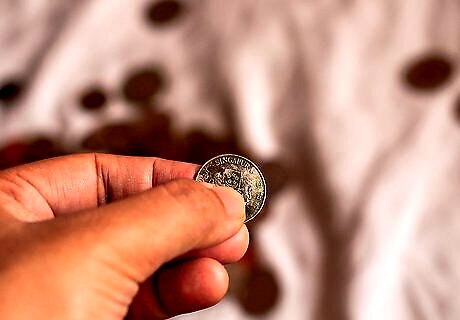
Look for a mint mark. A mint mark is a letter or group of letters indicating the city, state, or country where a coin was minted. The mint mark may appear on either the obverse or reverse. Current American coins bear the mint marks P (Philadelphia), D (Denver), S (San Francisco), or W (West Point). Other mint marks, for coins minted during the 19th century, include C (Charlotte), O (New Orleans), and CC (Carson City). If the coin has no mint mark, it was likely minted in Philadelphia, which did not use a mint mark until World War II, and then dropped it again until 1968. Spanish colonial-era coins marked with a capital "M" and small "o" were minted in Mexico, while a "G" represented "Guatemala" and a "CUZ" represented "Cuzco" (Peru). Sometimes the same mint mark represented different locations at different times, such as "P" representing Popayan (Colombia), Lima (Peru), or La Plata (Argentina). Other times, the same location may have had different mint marks at different times: Bogota (Colombia) used F, FS, SF, N, NR, or S during the two centuries coins were minted there. Mint marks may also be positioned at different places on the same coin design at different times. The American Jefferson nickel displayed its mint mark below and to the right of Monticello on the reverse from 1913 to 1941, over it from 1942 to 1945, below and to the right again until 1971, and on the obverse to Jefferson's lower right after 1971.
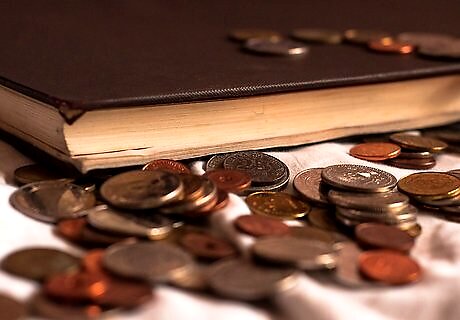
Consult a reference catalog. Coin reference catalogs can help you identify a coin once you have completed at least a few of the above steps. Good references for looking up coins where you're not sure of the country are the Krause World Coin catalogs, which have separate volumes for the coins of the 17th, 18th, 19th, and 20th centuries. If you've identified which country the coin is from, however, you may prefer a reference catalog focusing on that country's coins.

Ask someone. Many coin shops will be happy to help identify coins. Alternatively, many online forums and coin sites, such as Numista, have sections specifically to help identify coins.

















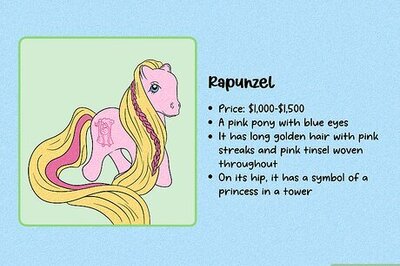
Comments
0 comment